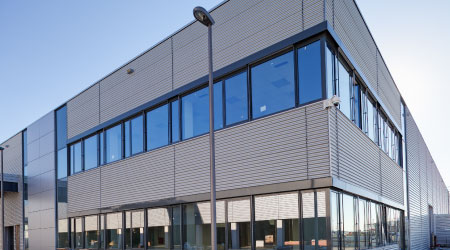Find the Roof Coating Best Suited to a Facility
First of a 4-part article on key issues to consider with roof coatings, including the condition and type of roof and coating characteristics
Used properly, roof coatings, can be a cost-effective way to extend the life of a roof for up to a decade or longer. And they can provide additional efficiencies, such as lowering buildings’ cooling costs and helping mitigate leaks. But roof coatings aren’t one-size-fits-all propositions, so facility managers should consider several factors to make sure they select the product best suited to their facility.
Facility managers are trying to perform their jobs in the most fiscally responsible way without sacrificing safety and quality. Extending the life of an aging roof by applying a coating is one way for them to achieve these goals. According to the Roof Coatings Manufacturers Association (RCMA), “Coatings will extend the life of the roof, by reducing heat transfer into the building, decreasing thermal shock (thermal expansion and contraction of the roof membrane), and helping to mitigate leaks. Reflective coatings also can reduce cooling energy costs and improve the aesthetics of the roof.” But how do you know if a roof coating is the best option for your building?
“The first determination needs to be whether or not the current system is suitable for restoration or coating,” says Joe Mellott, vice president of Innovative Metals Company. “Not all roofs can benefit from the application of a coating. Roofs that are well beyond their service life, roofs with significant damage and leaks, or roofs with wet insulation are not immediately ‘coat-able.’ Any serious issues need to be addressed prior to restoration or coating.”
Lee Martucci, senior product manager at GAF, agrees that the roof’s condition should be the first consideration. “As a general rule, if 20 percent or more of the roof needs to be repaired, you are better off replacing it than applying a coating. If you have a ponding water issue, a coating may not be your best choice.”
Another problem can be caused when coatings will be “exposed to specific families of chemicals,” Mellott says. For these reasons, “it’s important to have a ‘use discussion’ with a qualified manufacturer or roof professional prior to selecting a coating.”
“Coatings are not ‘miracles in a bucket,’ ” says George Daisey, a research scientist on elastomeric roof coatings for The Dow Chemical Company. “If the roof is damaged or leaking, then these issues need to be addressed first. It is irresponsible to think that all the flaws and damage in a roof assembly will be fixed by applying a couple coats of roof coating, regardless of the type of product. Always, always fix the problems with the roof first. Once properly repaired, then roof coatings can be considered for the job.”
“The second thing to consider is the type of roof,” says Martucci. For example, he says that, “coatings may be applied to most substrates, but some will require the extra step of applying a primer. For TPO roofs, most coating systems require a primer. For an asphaltic roof, a bleed blocker is recommended to prevent the asphalt from ‘yellowing’ the surface.”
Related Topics:














